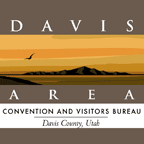Wednesday, February 27, 2013
Play in our backyard.
I grew up on the San Francisco peninsula - less than 15 miles from "The City". It's one of the most romantic, and visited cities in the world. It was so close, yet we "avoided" going there because of the traffic, the number of people - and the fact that where we lived was even nicer, in our minds. I could possibly get around in a car, but I couldn't tell you where the BART station is, or how to get to the stadium where the Giants play (Candlestick is a no-brainer... it's right on the freeway).
Similarly, my sister-in-law grew up in Montana, but had lived in SLC for over 20 of her adult years before she traveled to Moab for the first time, and promptly fell in love with it. Another friend has grown up in SLC (60 years), and she's been all over the world - but she also, has never been to Moab. Then again, I'm sure that there are many people who live in Orlando, who've never been to Disney World. Or New Jersey, and have never set foot on Manhattan. Lived in L.A., and never swam in the ocean. And so on.
In Davis County, we have our own "famous" place that many of our residents have never visited. Antelope Island is the largest island in the lake. It has received the designation of "State Park", because it has a fascinating history... not just in terms of written history, but geologically as well.
Bison, or American Buffalo were introduced to the island in 1893 - and today, the state manages a herd of over 500 of these amazing animals. In nature, there are many more males than there are females. However, on the island, the ratio is closer to 1:1. A result of this ratio there are many calves born each spring. In fact, the herd can grow by nearly 50% - which means most of the females have little ones.
There are 40 known and natural springs providing water to the larger mammals that live on the island. Other animals include mule-earred deer, mountain sheep, pronghorn and the coyote. Most of the grass is a non-native, but invasive "cheat-grass" (also known as "junegrass" and "downy brome")- which has little nutritious value to the animals that eat it. As a result, the state has determined that the bison herd needs to be thinned back to 500 each fall - and the process begins all over again.
The northern end of the island is developed - the ranger's home is found on the top of one hill, and the Visitors Center on another. And the park offices, as well as the bison pens are located here. A snack bar, with fresh water restrooms and pavillions for lunches is found at Bridger Bay. Likewise, campers can pitch a tent or park an RV in campsites at Bridger Bay or at White Rock Bay. A marina greets guests as the cross the 7 mile causeway from the mainland.
But as on drives south on the paved road that runs down the east side, there's a fence just past the ranger's house. From there on, nothing has changed in millenia - with the exception of Fielding Garr Ranch, which is about 13 miles down the road - and almost directly across from West Bountiful.
For the most part, the island is a big "desert" island. There are few trees, and little shade - (hint: where there ARE trees, there's often water).
If you look at the island for what it is, you'll come away amazed at the diversity of animal life, the beauty of the Wasatch from across the water, the renowned sunsets, the solitude, the views from Frary Peak of the west side of the island, or on the silly side - the opportunity to get IN the water, and say that you've "floated" in the Great Salt Lake. How many of your neighbors can say that?
The DACVB calendar keeps you up to date with the latest presentations by park rangers, there are events at the ranch inon Memorial Day, and at White Rock Bay on Labor Day weekend.
Go to TripAdvisor.com, and see the dozens of positive reports of people who have been there - many of whom are not even from Utah. (Weed out the mediocre, as hicks that can't appreciate nature).
It's so close, and yet far away. Do yourself a favor: If you haven't been, get out there and explore it.
Subscribe to:
Post Comments (Atom)

No comments:
Post a Comment